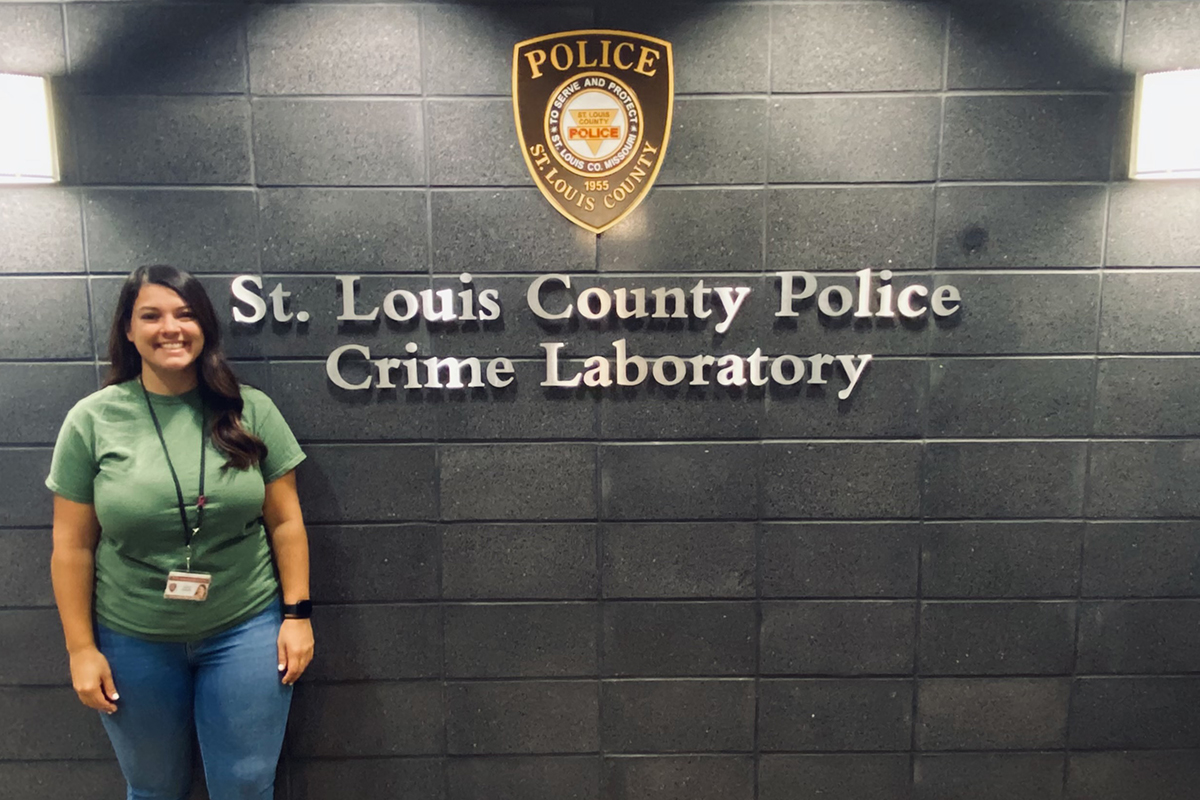Lexi Jackson, ’16, has known since the fifth grade that she wanted to do something “CSI-related.” But where most people might picture themselves working as a wily detective or a tenacious public defender, Lexi knew she was more interested in the back end of solving cases.
After she graduated from Maryville with a forensic science and biology concentration, it took her a few years to land her dream job at the St. Louis County Crime Laboratory, where she serves as a DNA analyst.
Tasked with writing reports and interpreting crime scene evidence, Jackson has been asked to testify in court on lab evidence on several occasions. Recently, she worked a cold case to help catch and try a serial rapist, who was now in his 80s. Jackson had always wanted to testify for the sake of the victims.
“It’s all about helping them get closure,” she said about taking the stand. “Letting them know that justice was served is very important to me, even though at times the process can be intimidating.”
Throughout her career, Jackson has kept in contact with Stacy Donovan, PhD, associate professor of biology. Donovan has invited Jackson back to Maryville to be a guest speaker for her classes and the Forensic Science Club. Her presentation to the students covers the crime lab as a whole, such as how many municipalities they serve (nearly 90), as well as an overview of her day-to-day responsibilities.
“It’s really important to give back to the students and point them in the right direction,” Jackson said. “Whenever you make a decision to go into a specialty like forensic science, it’s good to hear from somebody who is doing exactly that in their day job.”
Jackson recently facilitated a lab equipment donation to Maryville from the St. Louis Country Crime Laboratory. This past spring, she delivered a DNA extraction robot along with supplies and protocols. Donovan was “ecstatic” to receive the gift.
The robot and supplies will be used by students during lab hours or for research projects. They’ll be able to extract and purify the nuclear DNA of cells from bodily fluids in order to create a DNA profile. The robot will also help increase efficiency and decrease the chance of human error or contamination while evidence samples are being processed.
